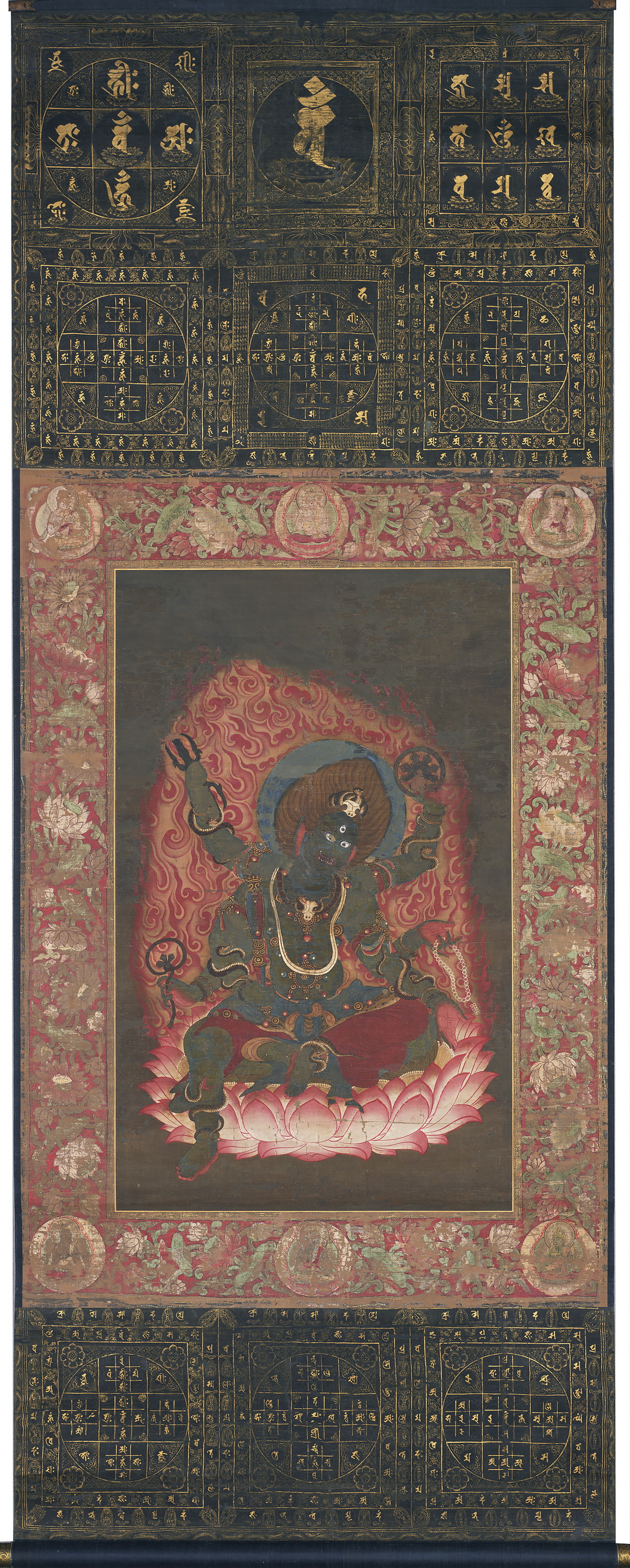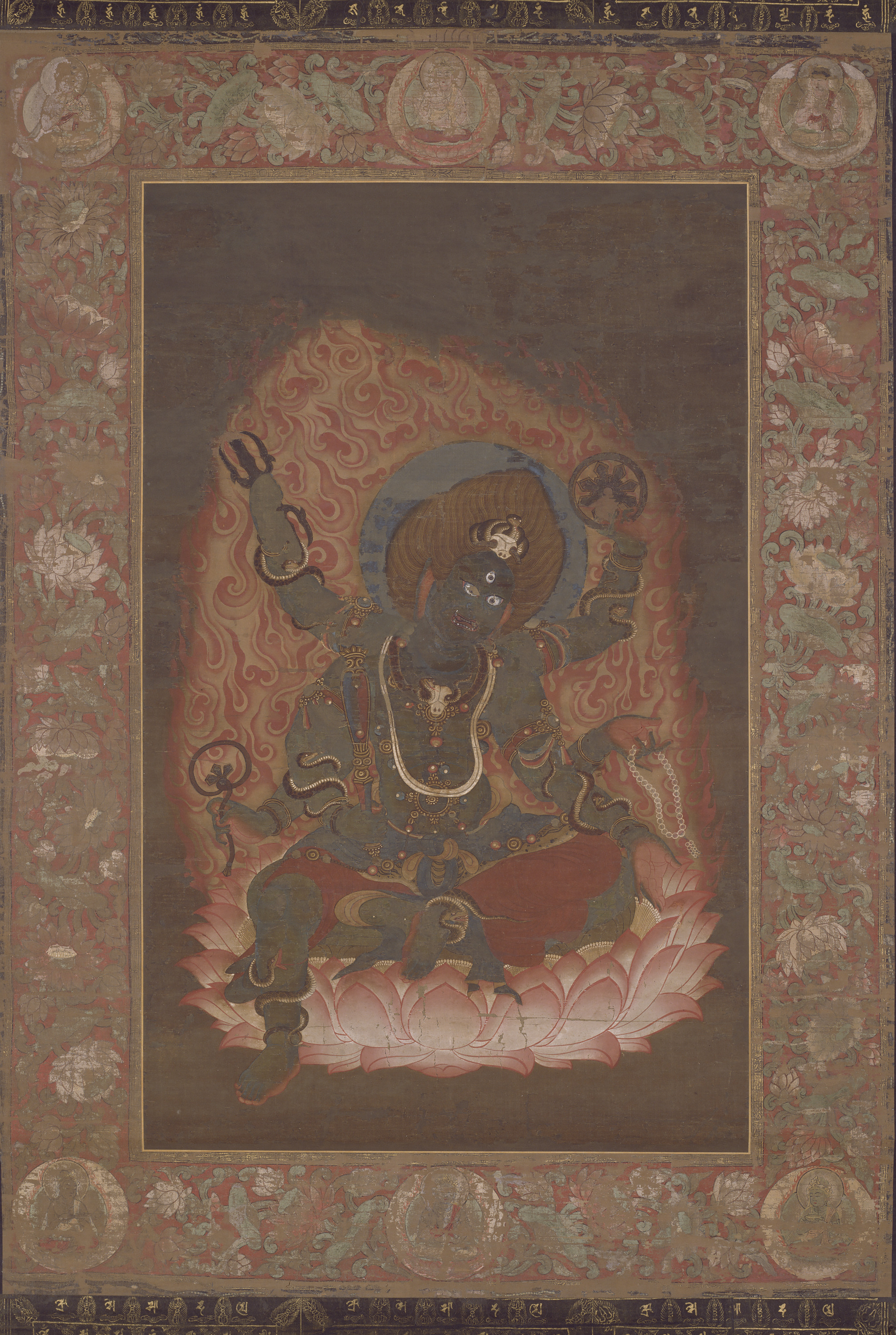- TOP
- Ususama Myoo (Ucchausma)
Overview
Important Cultural Property
Ususama Myoo (Ucchausma)
- Museum No.
- AK543
Showing 1-6 of 2
| Title | Ususama Myoo (Ucchausma) |
|---|---|
| Designation | Important Cultural Property |
| Artist | |
| Category | Painting(A), Buddhist Painting, Esoteric Buddhist Painting |
| Country | Japan |
| Period | Kamakura |
| Century | 13th |
| Year | |
| Quantity | |
| Materials | |
| Dimensions | Height 78cm Width 58cm 190cm |
| Inscription by | |
| Signature/Seals Etc | |
| Donor |
This object may be one within a set or the title of a set. To see all objects in the set, perform a Category Search by the Museum Number below, entering numerals only before the hyphen.









The main figure in this painting is Ususama Myo'o (Ucchusma), the god for good health, divine favor, exorcism, and childbirth. He is also known by the names "Kata Kongo" and "Ejaku Kongo." One of the five myo'o (vidyaraja) of Taimitsu esoteric Buddhism, Ususama was thought to possess the power to purify evils. This figure, with its three eyes and six arms is probably one of the Taimitsu type since its appearance is very similar to another image brought from China by the priest Chisho, which is introduced in Bessonzakki, a collection of Buddhist images.
Cut gold leaf and colorful motifs are used with restraint. The decoration of accessories and other objects was done using a technique called urahaku (gold leaf decoration on the back of silk), producing a subtle and subdued effect. Because these characteristics are sometimes seen in Buddhist paintings of the Tendai sect from the first half of the Kamakura Period, this painting is thought to date to the 13th Century. The mounting of the painting is taken from sections of a colored Mandala from the Kamakura Period and a Shushi Mandala with gold pigment on purple silk from the Nambokucho Period.
Japan-Kamakura